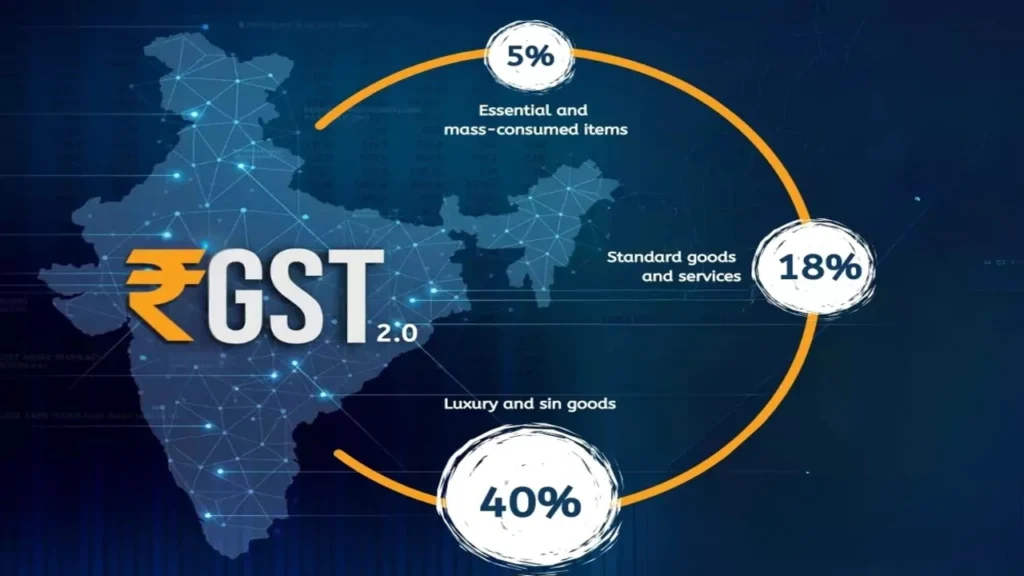In a major overhaul of India’s indirect tax system, the GST Council has approved the government’s proposal to reduce the number of tax slabs to just two — 5% and 18%. At the same time, the Council has also introduced a 40% “special GST” for harmful and luxury goods.
Finance Minister Nirmala Sitharaman, addressing the 56th GST Council meeting in New Delhi, confirmed that the 12% and 28% slabs will be abolished, with most items merging into either the 5% or 18% categories. This, she said, would bring major relief to the common man while ensuring higher taxation on harmful products.
Items That Will Attract 40% GST
According to the Council’s decision, the following items will now be taxed at the highest rate of 40%:
- Super luxury goods
- Pan masala
- Cigarettes and gutkha
- Chewing tobacco and zarda
- Sugary carbonated drinks
- Personal-use aircraft
- Luxury cars
- Fast food items
The Council clarified that these items will not attract any additional cess or sub-taxes once the 40% GST is applied.
Two-Tier Structure Simplifies GST
The Council’s decision marks a significant simplification of India’s GST framework. Until now, GST had five slabs — 0%, 5%, 12%, 18%, and 28%. The new reform leaves only two main slabs:
- 5% (lower rate)
- 18% (standard rate)
The 12% and 28% categories will be eliminated and their items merged into the two-tier system.
What This Means for Consumers
- Everyday relief: Many essential and mid-range goods will now be taxed at lower rates, making them cheaper.
- Higher cost for harmful goods: Tobacco, sugary drinks, luxury cars, and personal-use aircraft will now face steep taxation under the 40% slab.
- No extra cess: Items taxed at 40% GST will not have any additional cess, making the tax structure clearer and more transparent.
Conclusion
With this reform, India moves toward a simplified two-tier GST system while simultaneously discouraging harmful consumption through a steep 40% tax on luxury and sin goods. Experts believe this balance of lower rates for essentials and higher rates for harmful products will benefit the economy while easing the burden on the common man.
